world art 1
1/35
There's no tags or description
Looks like no tags are added yet.
Name | Mastery | Learn | Test | Matching | Spaced |
|---|
No study sessions yet.
36 Terms
attribute
an object or animal associated with a significant person
symbol
an animal, an object, etc. that stands for an idea or item
patron
a person or group that financially supports an artist or work of art
patronage
the act of giving support, encouragement, or financial aid to an individual or organization
patronize
the support/financial aid that an organization or individual bestows on another.
hierarchy of scale/hierarchical scale/hieratic scale
The use of differences in size to show relative importance
ocher/ochre
a natural clay earth pigment, a mixture of ferric oxide and clay and sand.
profile view
the subject seen from the side
pictograph
painting and drawing on stone/cave walls that depict words or ideas
sunken relief
a sculpture that is cut into the surface; below the surface
genre scene
depicts aspects of everyday life
canon
a set of accepted standards that is considered important in a particular art style or historical period
composite view
A pose that combines two or more viewpoints in a single representation
hieroglyphic writing
a pictorial writing system that uses pictures as letters/characters
ka
life-force or spirit
bas-relief
a sculptural technique that depicts designs that are slightly raised from a background surface
stele (pl. stelae)
An ancient, upright stone monument
coiling technique
a technique that involves rolling the clay into coils, stacks the coils together, and joins the coils to create a vessel.
lost-wax casting technique
the process by which a duplicate sculpture (often a metal, such as silver, gold, brass, or bronze) is cast from an original sculpture.

4.1
Apollo 11 Cave, Namibia, Painted Plaque,
c. 25,500-23,500 BCE
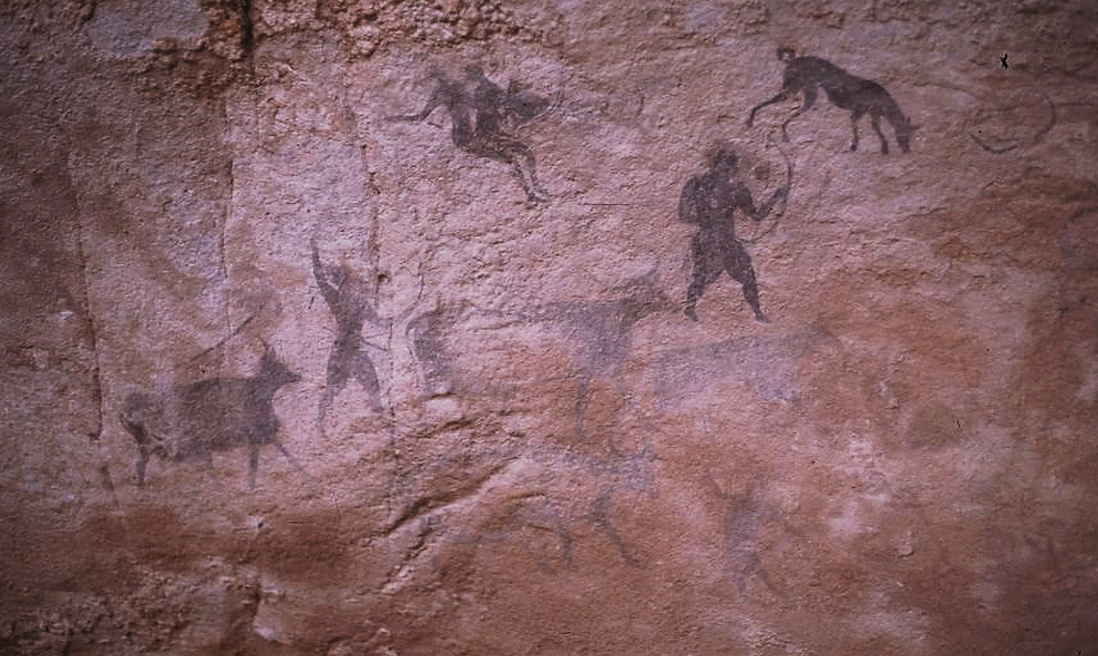
4.3
Tassili n’Ajjer, Algeria, "Camp Scene,"
c. 5200-2000 BCE
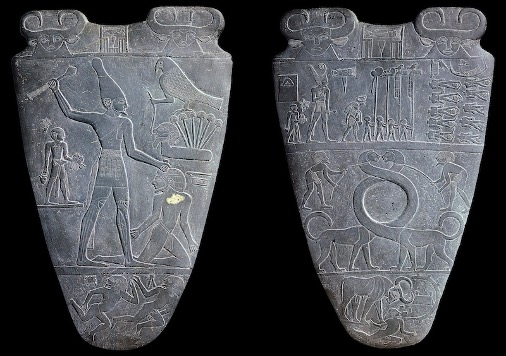
4.5
Hierakonpolis, Egypt, Palette of Narmer, c. 2950 BCE (right: obverse; left: reverse) (Early Dynastic).
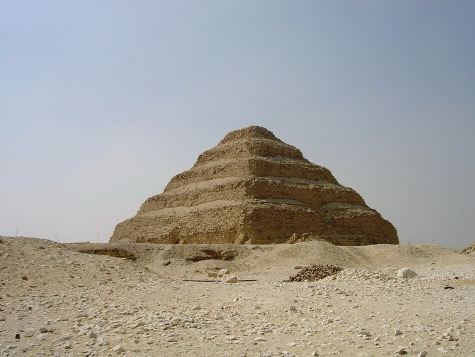
4.6
Saqqara, Egypt, Imhotep, Pyramid of Djoser, c. 2686-2648
(Old Kingdom)
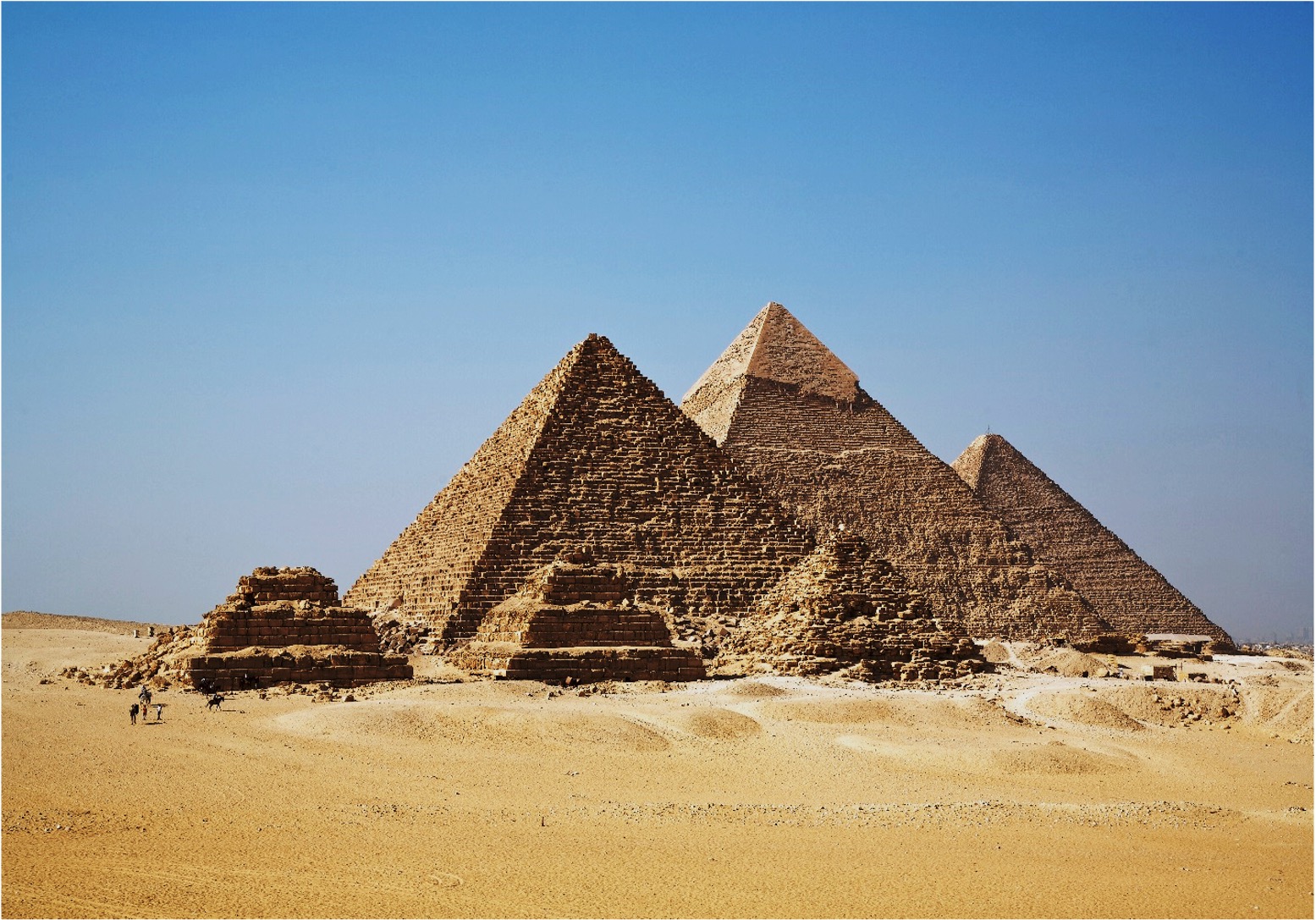
4.8
Giza, Egypt, (L-R) Pyramids of Menkaure, Khafre, and Khufu, c. 2551–2472 BCE (Old Kingdom)
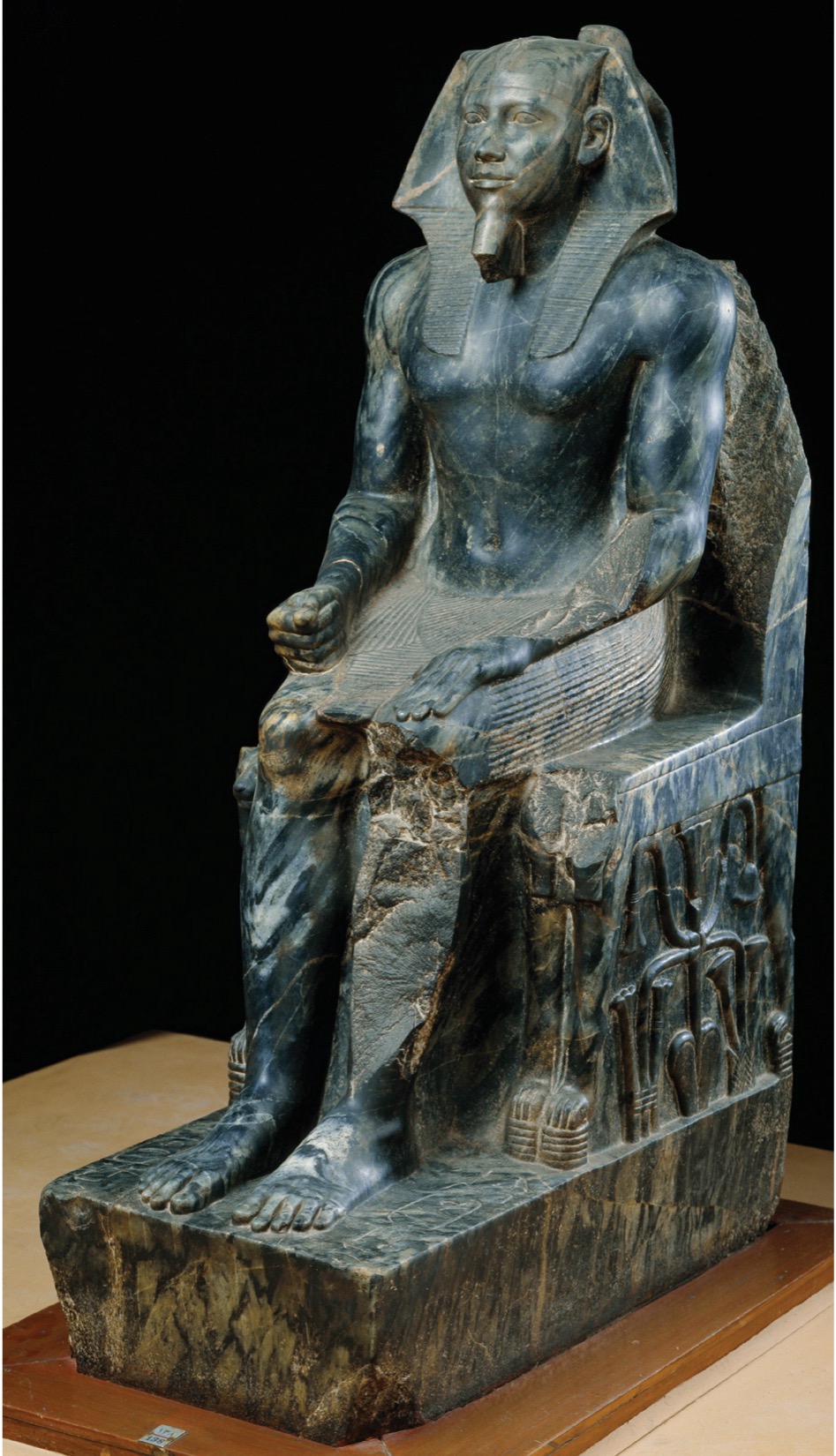
4.10
(L) Ka statue of Pharaoh Khafre, c. 2520–2494 BCE.
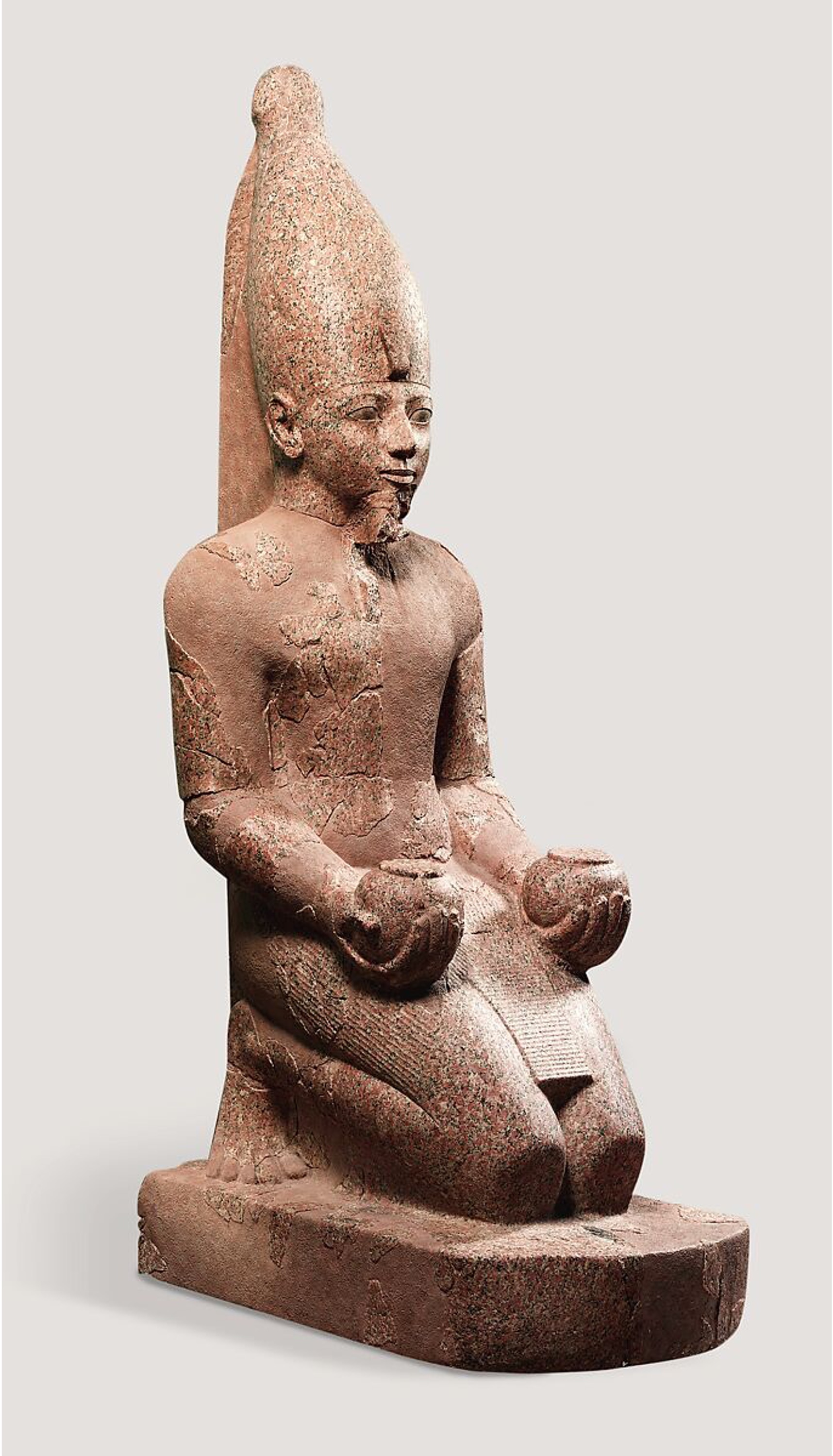
4.13
Deir el-Bahri, Egypt, Large Kneeling Statue of Hatshepsut with Offering Jars, c. 1479-1458 BCE, granite (New Kingdom)

4.14
Deir el-Bahri, Egypt, Senmut, Djeser-Djeseru Mortuary Temple of Hatshepsut, c. 1473-1458 BCE. (New Kingdom)
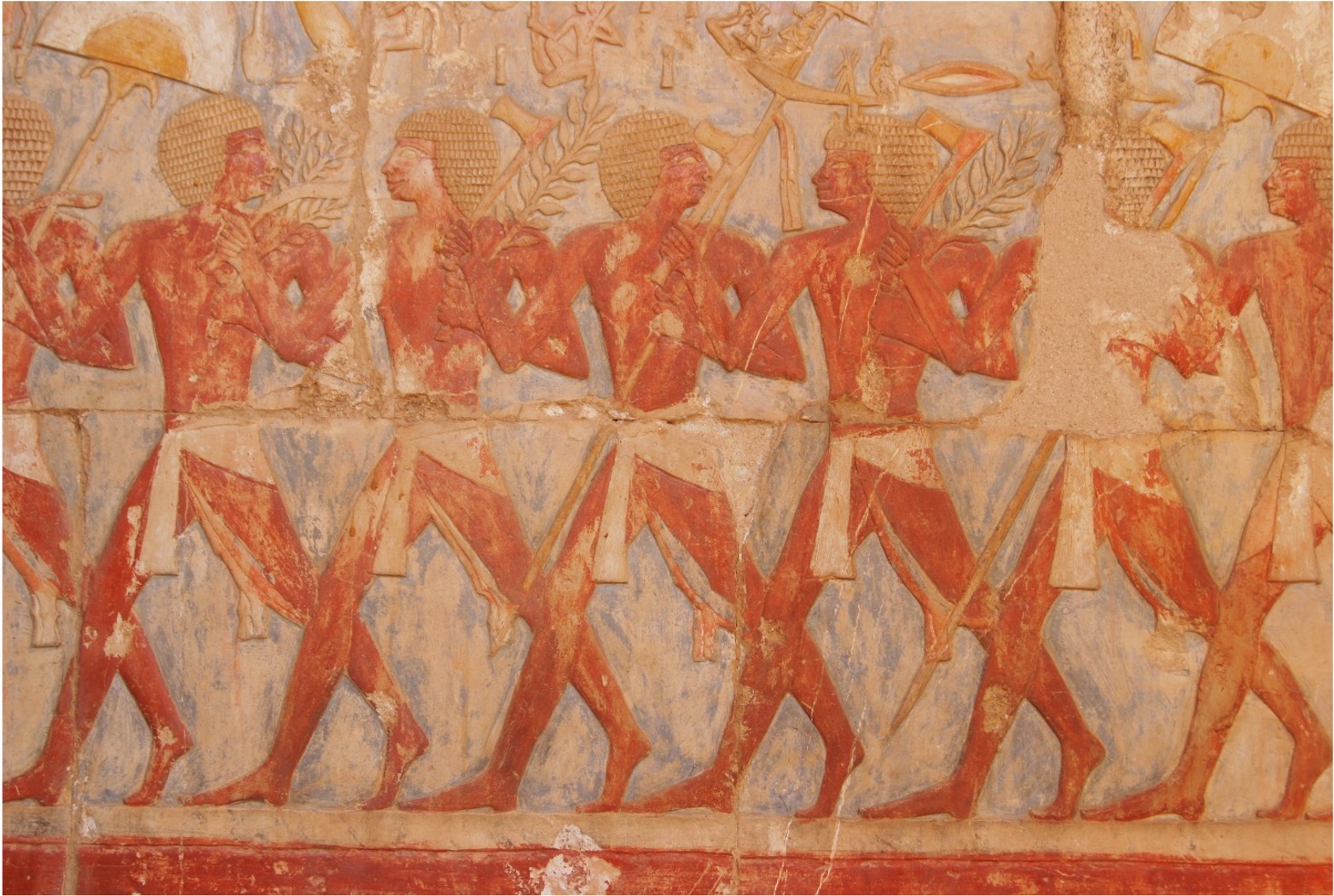
4.15
Deir el-Bahri, Egypt, Painted Relief, Mortuary Temple of Hatshepsut, c. 1473-1458 BCE. (New Kingdom)
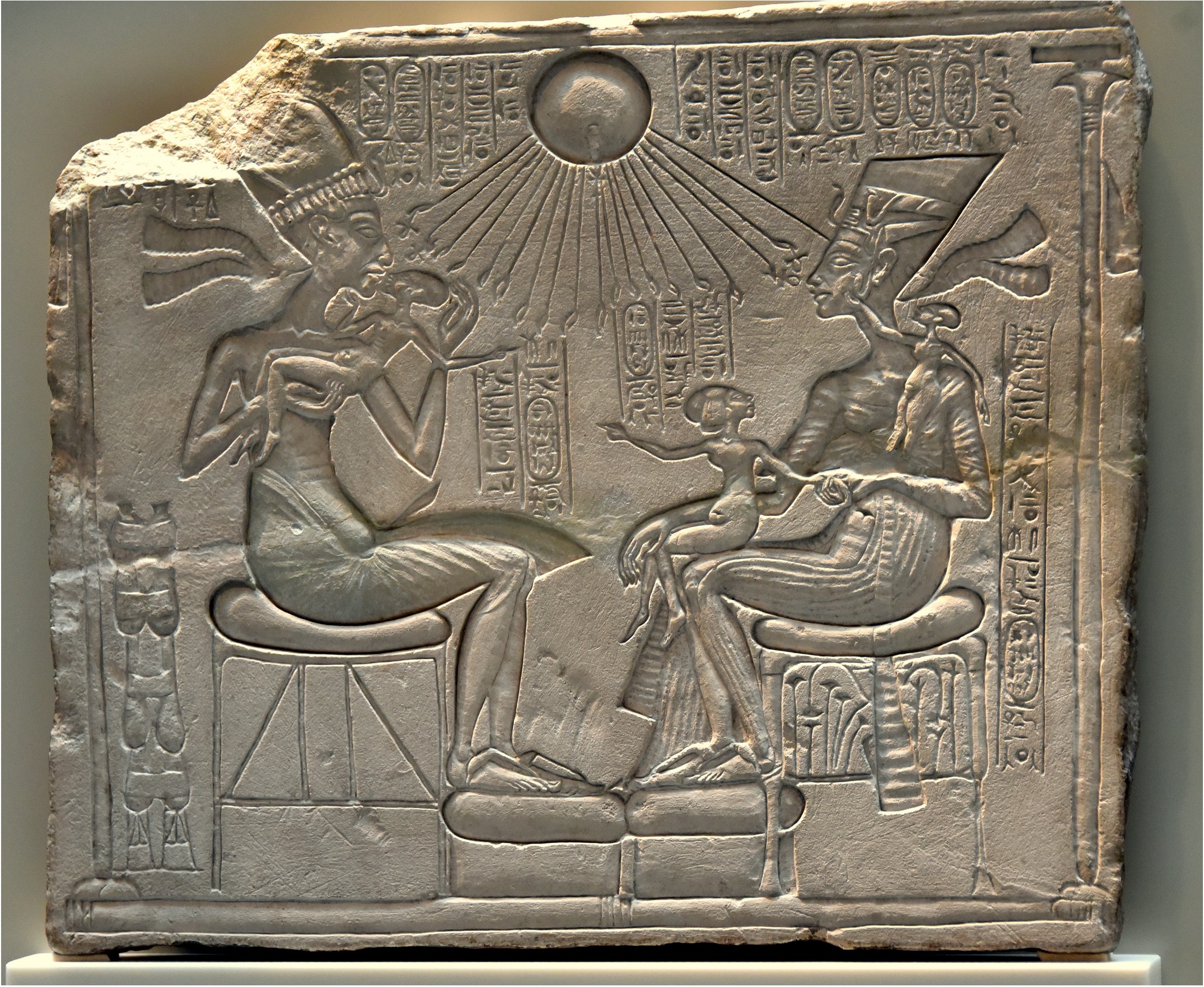
4.16
Amarna, Egypt, Akhenaten, Nefertiti, and their three daughters, c. 1353-1335 BCE, Limestone (Amarna Period)
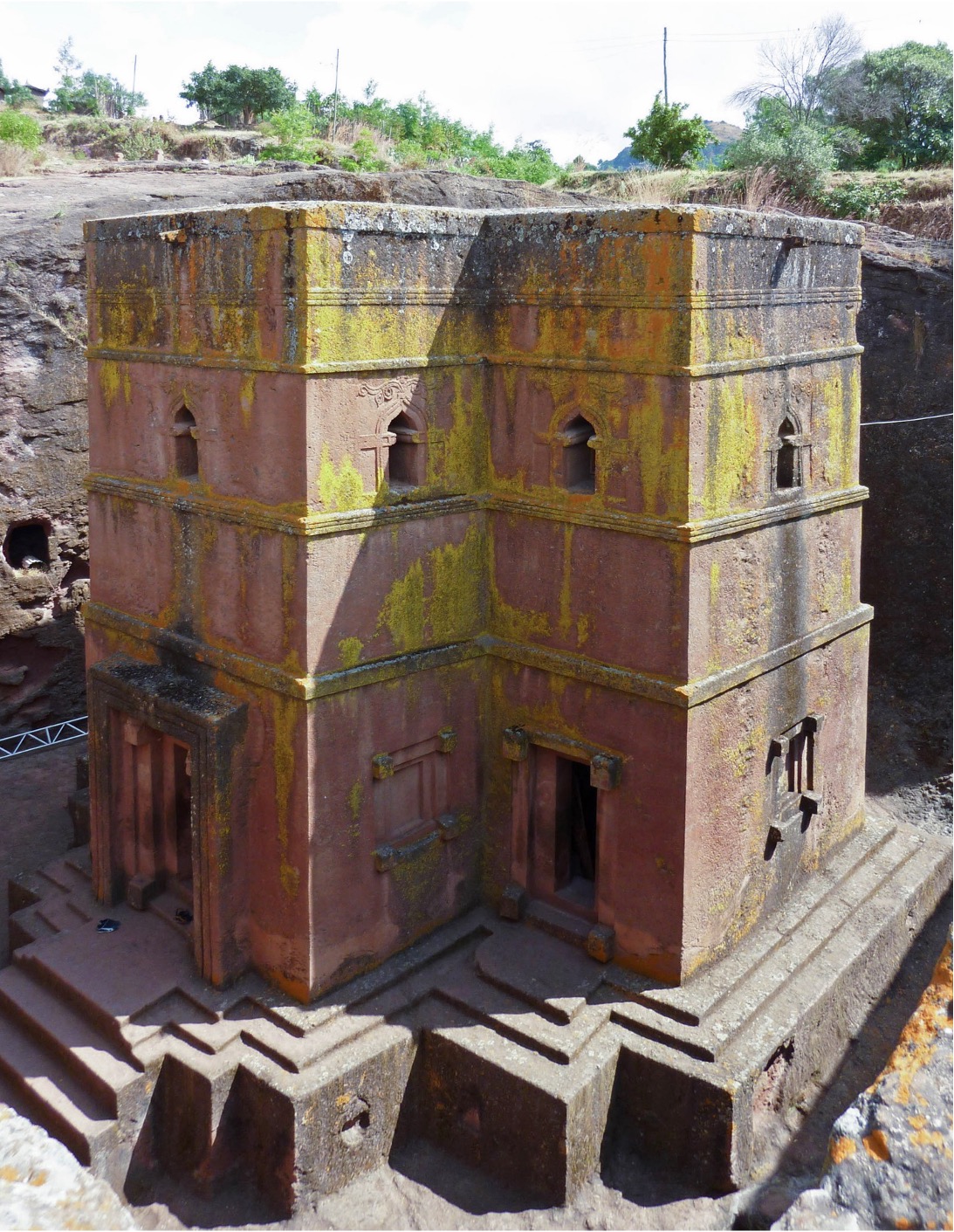
4.21
Lalibela, Ethiopia, West Façade of Bet Giyorgis, c. 1180-1220 CE, Rock-hewn tuff

4.23
Nok Culture, Nigeria, Male Head, c. 500-50 BCE, terracotta.
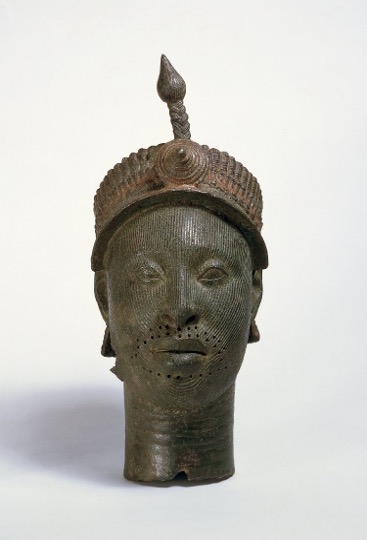
4.25
Wunmonije Compound, Ife, Nigeria, Memorial Head of an Oni, c. 1100-1400 CE, brass
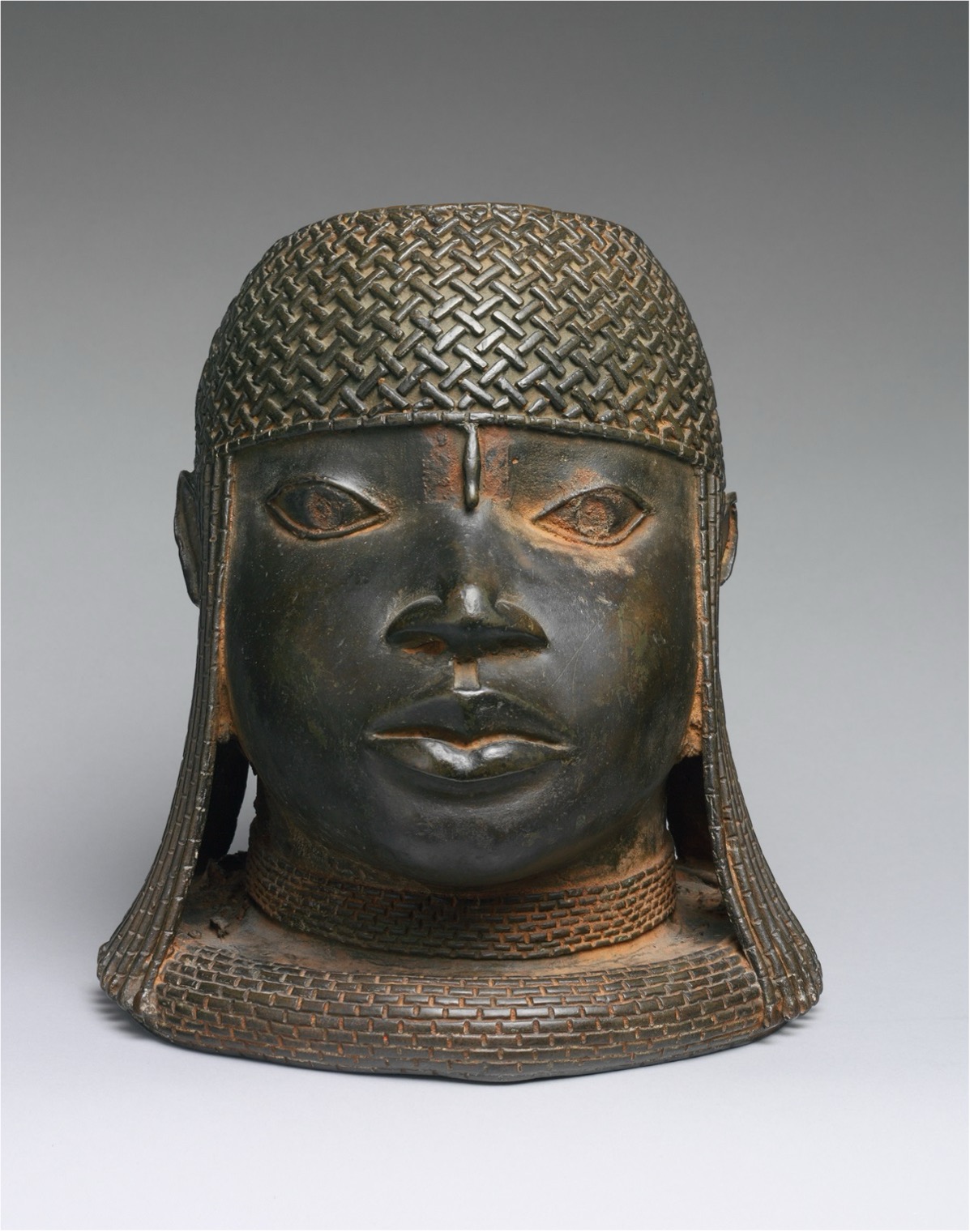
4.26
Benin, Nigeria, Head of an Oba, c. 16th century, brass
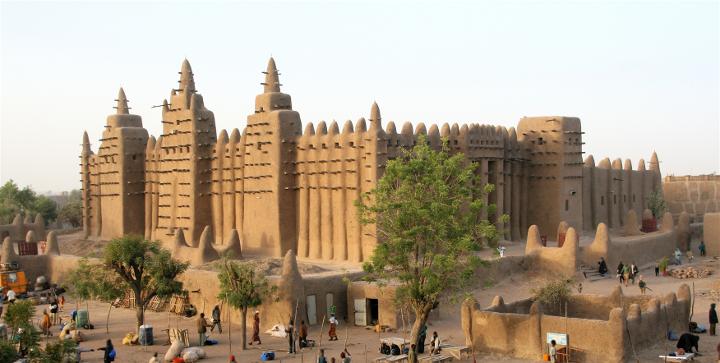
4.27
Great Friday Mosque of Djenné, Mali, 14th century, rebuilt 1907
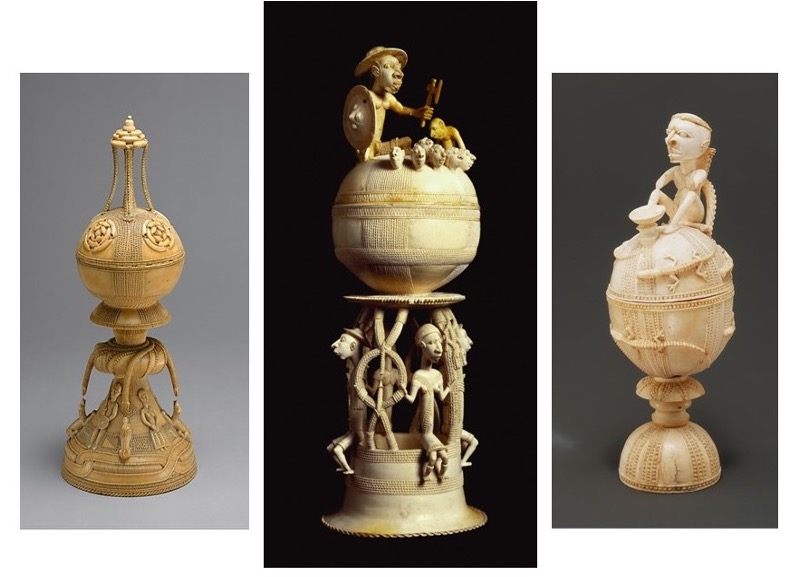
4.28
Afro-Portuguese Ivories
“Sapi”

4.30
Nigeria, Olowe of Ise (1873-1938), Veranda Post with Equestrian figure and Caryatid, early 20th century, Wood and pigment